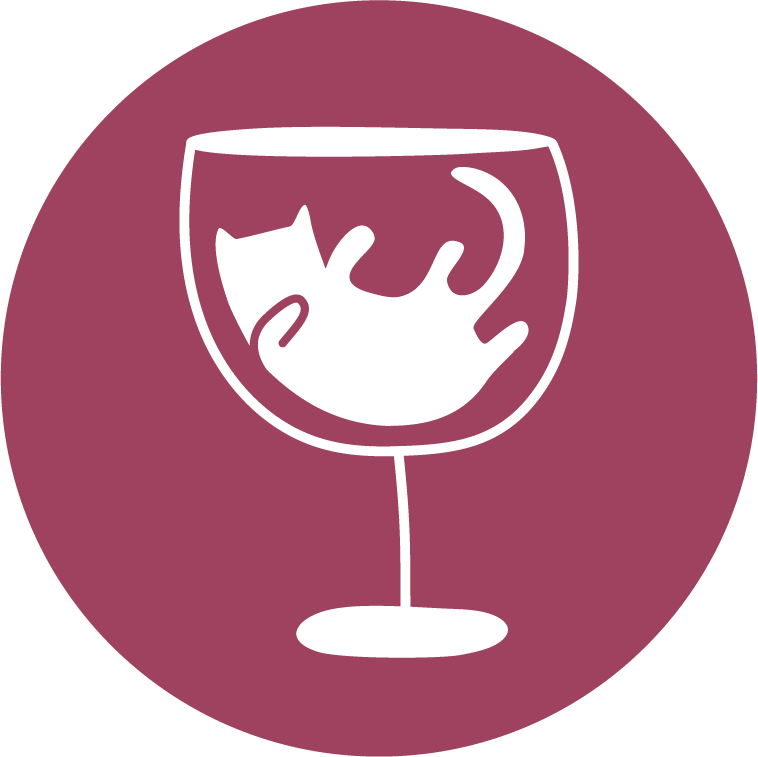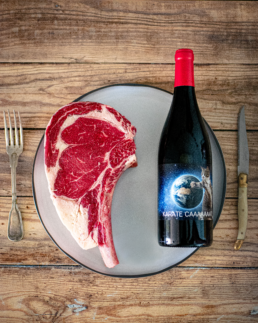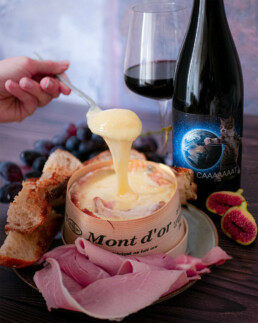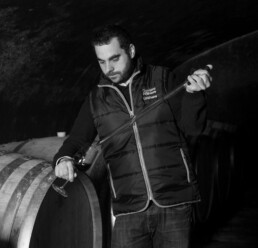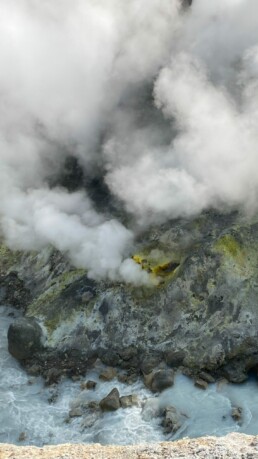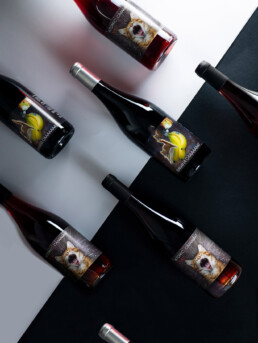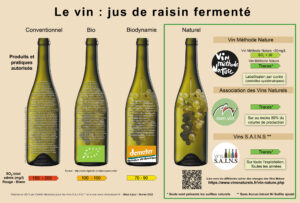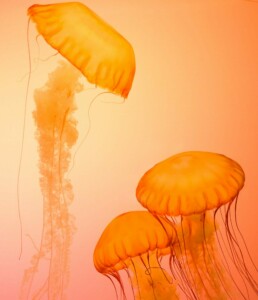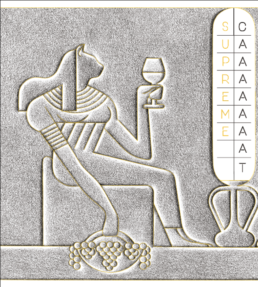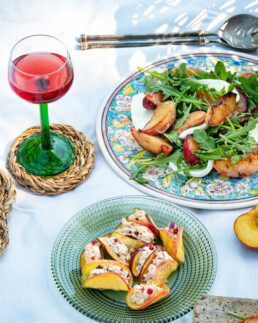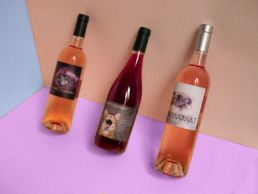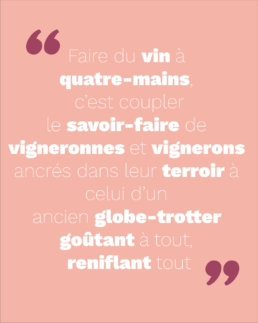Which wine to choose for a barbecue?
Ready to fire up the grill?
Sausages, chipolatas, merguez ribs, burgers, skewers, marinades, grilled aubergines, sweet potatoes, sardines… the possibilities for wine and barbecue pairings are numerous, so which wine to choose? Let us help you!
Basic advice
If you’re grilling red meat, go for a red wine with depth and structure, regardless of the grape variety, the important thing being terroir. A rounded Merlot with mature tannins (not dry, not hard) will form an explosive flavour pairing, delicious.
If you’re grilling white meat (without sauce, otherwise it’s like red meat), go for a white wine with substance, a dark rosé or a light red which will enhance the taste of the wine and the dish, without overpowering them.
For fish and seafood, from dry white to dark rosé, from Chenin Blanc to Malbec from Saignée, you’ll find something to meet the iodine flavours, strengthen them (rosé from Provence!), lighten them (rosé from the South West of France) and combine them perfectly (whites from cooler climates).
For a veggie barbecue, you can freestyle. Depending on the vegetables and how they’re cooked (trust yourself), when they’re spicy go for strong rosés, light reds, structured whites, when they’re milder, go for a nice chilled dry white, a light rosé or a Champagne!
If for you BBQ means no hassle
You’ve found some crisps, bought some sausages and you whip your barbecue out before one can blink. Now what are you drinking?
If you can’t be bothered / don’t know what to choose / want to please everyone, go for a summer rosé. From our collection, you could choose Sunny Caaaaaaat. A juice to be enjoyed well chilled, which will go perfectly with merguez! The fresh fruity aromas of this rosé will coat the spice of the sausage, its tender texture will match that of the merguez, the ripe acidity of the wine will cut through the fat.
You’ve bought some nice cuts from the butcher and want to go a little further? tease your taste buds (and your friends)? You say “I’m #teamroséforlife”, we reply Cosmic Caaaaaaat.
When you say “I don’t know what to choose”, we reassure you: pick the bottle you like and don’t worry about the rest. When the things we like come together, it’s all goooooood.
If you’re a barbecue aesthete, a karateka of the grill
With marinated ribs, you need a pomegranate squash for adults called Atomic Caaaaaaat. The delicate nature of white meats (chicken or pork) will be highlighted by the refreshing structure of the wine and its acidic red berry flavours.
With grilled aubergines, stop looking. The perfect match is Sunny Caaaaaaat all the way. Its ocean freshness will enhance your 100% veggie grilled delights, by bringing out the iodine and fresh grapefruit flavours.
Finally, Ladies and Gentlemen, put your hands together please, the ultimate combo, the rare prime rib with Karate Caaaaaaat! Under this crazy label hides a single vineyard wine, with no added sulphur, a wonderful Merlot matured in our cellars. The indulgence of the wine, coupled with its generous and mature tannin structure, pairs wonderfully with the tenderness of the juicy prime rib.
Advice for our 5th degree black belts
Serve the wine at room temperature (max 18°C), take out the prime ribs 3 hours before cooking. Season with fine salt, sear on low intensity coals so that the fat penetrates the meat (and doesn’t melt onto the grill creating flames and firming up the meat). Let it rest for as long as you cooked it, and then serve it seasoned to your tastes. If you want some more tricks, check out this article by Girls can Grill.
Tip
Be careful with vinaigrettes and acidic sides (tomatoes, gherkins…), they may alter the taste of wine. For salads or gherkin time, opt for a nice glass of water! Water is important too.
Wine & Cheese pairing
The marriage of wine and cheese is a centuries-old tradition, an ode to fine dining! In France, the land of 400 cheeses, there are many pairings options, here are a few:
Hard cheeses
Hard cheese and dry white wines: Comté, Beaufort, Salers, Emmental and Gruyère are the perfect companions for dry white wine, whether they tend to be oxidative or not, like the wines of Jura and Southern Burgundy. Ossau-iraty, Manchego, Parmesan and Pecorino come alive with more robust dry white wines like Côtes de Gascogne (dry), the Chenin Blanc of Cahors, the whites of Languedoc.
Step off the beaten track with Sunny Caaaaaaat.
Goat’s cheeses
Goat’s cheese with a Loire white wine: Anjou Noir, Sancerre, Pouilly Fumé, Quincy, Reuilly, Menetou-Salon… the fruity notes of these wines will glorify the light and fresh notes of goat’s cheeses. Pairings with light rosés will enhance the wine!
Adventurous? Try a pairing with Cosmic Caaaaaaat!
Soft cheeses
Soft cheese and red wine: Brie and Camembert are delicious with a light and delicate red wine from Burgundy, Beaujolais, Alsace or Loire. The soft texture of these cheeses will envelop the light tannins, their flavours will reveal the fruit, sometimes even the floral notes of the wines.
Blue cheeses
Blue cheese and a red wine or a sweet white wine: for lovers of reds with cheese, opt for a Roquefort or a Gorgonzola paired with red wines from Corsica, Languedoc-Roussillon and the Rhône Valley. The black fruit and spicy aromas of these wines will envelop the intense and spicy aromas of the blue cheeses.
Why not a Karate Caaaaaaat?
For Gex and Termignon blue cheeses, or Picón Bejes-Tresviso, a sweet wine (ideally botrytised) will reveal a surprising pairing for the taste buds: the creaminess from the residual sugar in the wines will harmonise with the delicacy of these cheeses, exalting the complex bouquets of the wine: honey, spices, dried and confit fruits, toasted brioche, nuts, orange blossom, citrus…
Conclusion
There is no hard-and-fast rule, there are a thousand possible pairings; the personal tastes and preferences being the main factor in your choices. So, if you’re unsure, don’t think about it too much: cheese and wine from the same region! It’s usually a winning team.
Interview with Romain Paire, Domaine des Pothiers, Banana Caaaaaaat partner 😻
Making a four-handed wine is about combining the winemakers’ expertise, which is rooted in the terroir, with that of a former globe-trotter who tastes everything, smells everything (like a cat).
Romain
Can you describe yourself in a few words?
Domaine des Pothiers is a polyculture family farm. The farm has a history, it’s been in the family for several centuries with a large winemaking activity and a cattle breeding section (Limousine and Jersey cows). I wanted to keep up the cattle farming to preserve an gricultural dimension, and also because it’s part of the farm’s biodynamic world.
How did you get into winemaking?
I didn’t really have a eureka moment because I had always seen my dad working in the vineyard and making wine, I always enjoyed working with him. One day I told myself I’d carry on with the job, that I’d take over the farm. I think I always had that feeling inside.
How do you work in the vineyard and the cellar?
With respect for nature, by maintaining the balance. We work with Biodynamics and try to have as little impact on the natural environment as possible. We grow the vines as gently and respectfully as possible. In the cellar, we try to work with the lowest amount of inputs, even with none when we can, to respect the grape, the wine and its consumer.
The wines
For you, what is essential to creating a good wine?
Good grapes of course!
Making good wine is about a multitude of little details. Some seem insignificant but are important. It requires care and rigour. Above all, good wine starts with the vine and the quality of the grape, then it's up to us to make the most of it.
Is there a message behind your wines?
No, I’m not into politics. I don’t think there’s a message behind my wines. What I try to convey is enjoyment, wine is about celebrating, craziness, good times and I definitely don’t want my wines to be dogmatic!
What would you like to say to anyone who wants to become a winemaker?
Go for it! Go for it because it’s not impossible. If you want to do it, there’s no reason it won’t work. There’ll obviously be some work (laughs) but you have to go for it!
Dreams
What did you enjoy the most when co-creating Banana Caaaaaaat?
I like the relationship we have with Christophe because we work with trust and that pushes me to make different wines, which takes me out of my comfort zone. I understand what Christophe wants and how he sees wine, which is sometimes different to how I see it. So I work under his vision and this forces me to ask myself some interesting questions.
Do you have a winemaker’s dream to share with us?
My goal is to try to always do better in terms of quality and not to develop in quantity.
I’d like to have a little more finesse, and improve some details.
Maintain the polyculture aspect, and maybe even develop it, try to have something larger, add new things to the farm, maybe visits or a restaurant or something. Diversify the farm even more, doing it in an intelligent, environmentally friendly and social way.
Thank you for the chat Romain.
Thanks to Domaine des Pothiers for being our partner.
We love you!
What is sulphur a.k.a. sulphites a.k.a. SO2 a.k.a. E220 a.k.a. sulphur dioxide… oh, enough already!
Sulphur dioxide is a colourless gas, with a penetrating smell in its natural form, and discreet when dissolved in a liquid. All fermented products contain sulphur dioxide, coming from the natural process of fermentation. In other words, sulphites are a preservative naturally present in fermented products.
Are you following?
For wine, we use the term sulphites. Even in unsulphured wines, you can have up to 20 milligrams per litre (20gr/L), because sulphites are naturally produced by yeast during the winemaking process. This is why wine with “zero sulphites” doesn’t exist and why we use the term “no added sulphites”.
In the winemaking process, sulphur has been used since the 18th century. The Dutch introduced it in France with the invention of the sulphur fuse (which is used to disinfect the barrels before they are reused). Sulphur has antiseptic and antifungal properties, which inhibits yeast and harmful bacteria, and stabilises the wine. This sulphur is just like anything else: fine in the right amount, bad in excess (like the sun, water, oxygen, chocolate… OK, not chocolate.). It is all about balance.
The WHO has established the maximum daily intake of sulphur as 45 milligrams for someone weighing 65KG (10st 2lbs) ; with the rule of three you’ll see what’s right for you.
Here’s an informational table on the doses of sulphur authorised depending on the type of winemaking operation:

*AVN: Association des Vins Naturels (natural wines association)
Sulphur is a vast subject; industrial companies in the agrobusiness even add it to fruit (!) and chips (!), in addition to lots of additives and correctives. We are opposed to that. We are artisans, crafters, artists of winemaking, our philosophy can be summed up in one word: respect.
Making natural wine
Natural wines are not only about suphites, it is about how the vineyards are conducted (with plant maceration and “bouillie bordelaise” or with herbicide, pesticide and unatural fertilizers), how the grapes are handled (manually with care, or industrially with machines), how the juice is fermented (naturally or with the help of chemicals)… More is explained on our blog.
Caaaaaaat wines are naturally crafted by Christophe Kaczmarek in collaboration with his friends winegrowers which vineyards are cultivated according to the organic and biodynamic rules. The winemaking is then natural: no added products or chemicals, most of the time not even sulphites, and no filtration, fining or elements which could spoil the wines authenticity.
In all cases, taste is our number one priority.
What is natural wine?
Simply put
By definition, wine is a cultural product. You can’t stumble across some wine out in the wild, it requires the intervention of a winegrower to make it from grapes (those guys are natural).
So simply put, natural wine is a wine which is made as naturally as possible:
- No synthetic products: not in the vineyards, not in the cellar, anywhere
- Manual harvesting
- A total sulphur/SO2 level lower than 40mg/L
In other words, we aim for pure fermented grape juice. Yes, this should always be the case, but it’s not that simple. Nature is capricious and we don’t follow its rhythm anymore.
A bit of History
The history of naturally produced wine goes back to Antiquity, well before the arrival of 20th century industrial winemaking techniques, which were doubly amplified by the Second World War: the rapid development of petrochemicals (notably for armaments) and the race for yield (during reconstruction).
In France in the 1980s, the movement for a return to natural wine production was spearheaded by such illustrious figures as the Beaujolais "négociant-éléveur" Monsieur Jules Chauvet, who was also a writer, scientist and fine wine taster. Jules Chauvet was a pioneer, one of those rare human beings for whom the adjective "genius" means something. As early as the 1950s, he was producing natural wines. His methods slowly caught on with curious minds such as Jacques Néauport, itinerant wine producer, and the emblematic Beaujolais winemaker Marcel Lapierre (and many others).
During the 90s, the natural wine movement continued to gain popularity in France, Italy and Slovenia, then spread rapidly across Europe and the world (including the USA and Australia) from the 2000s onwards.
Nowadays
Today - as the general public becomes increasingly aware of the benefits that such production brings to their health and that of our environment - many winemakers are converting their vineyards or opting from the outset for healthy agriculture and natural winemaking methods.
The image below summarises the differences in winemaking methods:
And as we are seeing a wave of greenwashing, keep one thing in mind: free wine doesn’t exist. Either we pay with cash, or we pay the price by damaging the environment.
Orange, the fourth color of wine
What is orange wine?
Orange wine, made exclusively from white grapes, is also called “skin-contact” white; a clue to the origin of this orange color coming precisely from the maceration of the skins with grape juice. Orange wine is therefore a white wine vinified like a red!
While for the majority of modern white wines, the grapes are directly pressed, those used for orange (and red) wine macerate with the skin, seeds, and sometimes stems, for a duration ranging from several days to several months. This maceration, this contact with the solid parts of the grape, gives white wine its orange color.
Origins
Contrary to what's often heard, orange wine is not a new trend. It's an ancient practice, with its modern revival dating back to the 1990s, in the Friuli-Venezia Giulia region, specifically in its cross-border area with Slovenia. The major winemakers behind this revival are Slovens: Gravner, Radikon, and Vodopivec. Since then, many wine producers have followed in their footsteps... including Caaaaaaat!
So, the first white wines were orange wines. It's difficult to pinpoint exactly when they appeared, as it seems these wines existed even before writing (which goes to show how far from a new trend this is). However, it's likely that the origin of orange wine can be traced back to Georgia – known for its terracotta amphora winemaking (qvevri), still practiced today – and then integrated into the winemaking methods of Antiquity. During this period, wine preservation was achieved through the addition of exogenous materials (pine resin, honey...) and/or prolonged maceration to extract the famous polyphenols, powerful antioxidants, from the grapes.
Today
It's not by chance that orange wine is reborn in the realm of natural wines. Tradition is alive, in perpetual motion. It accompanies societal changes, the desire for change in new generations ready to act for their well-being and that of their environment, even in the realm of pleasure.
If you want to taste one of the many examples of orange wine, start with O.G. Caaaaaaat; O.G. for "orange," O.G. for "Original Gangsta," because you now know that orange wine is the O.G. of white wines... and if you still don't understand what we're talking about with this O.G. story, go listen to Ice-T’s album released in 1991.
To learn more about orange wines, taste them at your favorite wine shops and wine bars!
Cheers!
What is Supreme Caaaaaaat?
Supreme Caaaaaaat
Supreme Caaaaaaat pays homage to the goddess Bastet, a descendant of Ra (the Sun God). She is a goddess of music, the sistrum being her instrument; the basket and the knife are two of her other symbols. Bastet is a feline goddess with a dual identity. In her cat form, which is her most regular form, she embodies the warmth of the sun, fertility, the joy of home, and carnal pleasures. Provoke her anger, and Bastet will transform into a lioness, a protective and fierce warrior.
Supreme Caaaaaaat magnifies the genius of nature in wine, specifically that of Chablis. The renowned "liquid gold", here, comes from single vineyards grapes from my friend Cyril Gautheron. Fermented spontaneously, meaning with its indigenous yeasts and without oenological additives, vinified without sulfites with a slight addition before bottling, this cuvée will only see the light of day in years when the conditions allow us to harvest healthy grapes, with yeasts vigorous enough to give rise to an aromatic profile of great class.
How is the Supreme Caaaaaaat cuvée different from other Chablis wines? It's simple: to produce such a wine in this northern appellation with a continental climate (where the pressure from cryptogamic diseases is high) is like painting a Rembrandt!
Chablis, an internationally renowned appellation
The Chablis vineyard is located 180 km southeast of Paris. Although it is geographically closer to Champagne, this vineyard is part of the Burgundy wine region.
The Romans were the first to plant vines in the region. After numerous historical upheavals, the Chablis vineyard now extends over four delimited areas: 730 hectares (ha) of Petit Chablis, 3150 ha of Chablis, 770 ha of Chablis Premiers Crus, and 104 ha of Chablis Grands Crus. The soils of the best parcels are composed of Kimmeridgian limestone, rich in marine fossils, including the famous "exogyra virgula" oyster shell.
Notably, Chablis wine is exclusively produced from the Chardonnay grape variety.
What wine should you choose for a picnic façon French Chef Arnaud Delvenne?
Recently, Top Chef (pro cooking reality show) has seen French Chef Arnaud Delvenne put a light on the tuna with peaches recipe.
What’s tuna with peaches? It’s a Belgian speciality which, as the name suggests, mixes peaches and tuna. When you say it like that, it doesn’t sound particularly appetising, and yet, Arnaud, one of the show’s finalists, has shown us that it is a banger.
So, two friends of Caaaaaaat, Ségolène & Serena, have dug up and immortalised three tuna and peach recipes for your picnics, and of course there’s a picnic/wine pairing to enhance everything.
Peach salad
Ingredients:
- Roquette
- 2 large peaches
- A little bit of butter and sugar
- A nice burrata
- A few mint leaves
- Olive oil & salt
Method:
Cut the peaches into 8, remove the pit, fry them for a few minutes on each side with a little butter, 1tsp of sugar and a little salt at the end of cooking.
Be careful, they need to stay firm, you just need to brown them off!
Wash the roquette, cut the burrata, take the mint leaves off the stem and mix it all together with the peaches, season with a little olive oil, salt and pepper.
Tuna and peach club-sandwiches
Start by toasting your favourite bread (from a nice bakery). If you live in Paris or Lyon you could try Antoinette, Utopie or Mamie!
At the same time, mix a tin of tuna with cream cheese, a finely chopped shallot, chives, lime juice and let’s season it: salt, pepper and crushed pink peppercorns.
Garnish the bread, a little salad on top and close it up. It’s ready! Serve straight away with Atomic Caaaaaaat.
Arnaud Delvenne’s ravioli
Ok, this couldn’t be simpler! The peach will play the part of the ravioli which we will garnish with the tuna mix. If you speak French and fancy trying a Top Chef level recipe, you can find it here (lien).
Our version is much easier, you just need to:
- Cut your peach into thin slices using a mandoline.
- Make a light tuna tartare and season with sesame seed oil, lime juice, salt and pepper.
- Place the tartare at the centre of the peach slice and close it to make the ravioli.
Which wine will accompany this picnic?
Rosé? Red? Which wine goes with a tuna and peach picnic?
Once again, it’s simple: Atomic Caaaaaaat will pair perfectly with these dishes. Its juicy flavours, soft spices… the pomegranate squash for grownups will match this sweet and savoury duo.
If you’re careful about what you put on your plate or in your glass, you should know that Atomic Caaaaaaat is a natural wine, manually harvested with the grapes sorted on the vine and a second time in the cellar. Like a good fruit, there are no inputs at any point throughout its production process.
Bon appétit !
Rosé, is it wine?
Rosé, is it wine?
Let’s get straight to the point: yes! It’s even the second most popular wine colour in France, ahead of white and after red (source: FranceAgriMer and OIV).
Where does rosé come from?
Rosé wine started in Provence, the first historic vineyard in France dating back to sixth century BC. The vine was introduced by the Phoceans or the Phoenicians (historians are still debating!). Makes you think, doesn’t it? The biggest rosé producing region in the world is 2500 years old.
The production of rosé is part of French ancestral expertise and savoir-faire. All French wine-producing regions make it, whether it is an AOP (France’s protected designation of origin), an IGP (European protected geographical origin) or a Vin de France.
How do you make rosé?
In France, rosé is a wine in its own right, which requires know-how. It is made with purpose, with specially chosen grape varieties and terroir. It gets its colour from the skins of red grapes. The grape juice is in contact with the skins for an amount of time decided on by the person making it: the longer, the more colour the wine will have. Simple.
Outside of the numerous other countries, in France, only the Champagne region is authorised to blend white and red wines to make a rosé. Even this method has precise rules. For example, winemakers in Champagne can only do it before the secondary fermentation.
“50 shades of rosé”
There are many rosé colours, obtained from red grapes and linked to contact time between the juice and the skins. Of course, bad wines have a thousand artificial techniques for achieving the desired colour (like through carbon filtration). Bad wines being not of interest to us, let’s look at the shades of rosé, their origin.
Rosé wine through pressing: we directly press the harvest (whole or destemmed), more or less slowly depending on the result we want, and we transfer the juice into the vats (or barrels) to start the alcohol fermentation. With this technique, we create clearer rosés.
Rosé wine through maceration: the difference from the first method is simple. Upon receiving the harvest, we don’t directly press the grapes, we place them in the vat to macerate them (up to 24 hours, more than that and it starts to become red). The grapes then release their pulp, their seeds and their juice. It’s during this short period of maceration that the juice becomes coloured, it becomes pink. We then press the must to only extract the liquid, the grape juice, which will then ferment; preferably at a low temperature in order to preserve as many flavours as possible.
Rosé wine through bleeding (saignée): the harvest is put into a vat (like the maceration method) and intended to make red (unlike maceration). After a set maceration time (up to 48 hours), we remove the juice we want to vinify from the vat… it’s already nicely coloured, it will ferment and be our “rosé de saignée”; the other part of the vat is left to gently macerate to create a red wine.
Drinking rosé, a guaranteed headache?
Not at all! Only drinking a bad wine (or way too much wine) will give you a headache. Rosé, if it’s well-made, will not have excess sulphites or other additives which will overwhelm your liver, thereby leading to dehydration and the famous headache. When drunk responsibly, rosé can be enjoyed just like a wine of any other colour: red, white, orange!
What’s the best rosé in the world?
Speaking completely impartially, of course, there are three: Sunny Caaaaaaat (macerated rosé), Cosmic Caaaaaaat (rosé de saignée 24h) and Atomic Caaaaaaat (rosé de saignée 48h). We write this out of pure experience.
Conclusion
Rosé is a real wine, a singular wine, a wine for BBQs, for family feasts, for any time of year!
Four-hands, what does it mean?
Massage? Cooking? We practically massage the vines, we practically cook the wine... Four-hands, it’s the modus operandi of the Caaaaaaat collection.
The how and the why
Started based on the model of perfume makers who select and gather together fragrances from plants from specific areas, little by little, the Caaaaaaat adventure has transformed from the art of blending to those of winemaking. A famous French newspaper presented Christophe Kaczmarek debuts: “he draws his inspiration from master blending, which has been dramatically enhanced by the Japanese. Victims of their success, Japanese distilleries had to reinvent themselves when they ran out of old whiskies, they sold out too quickly due to an unexpected enthusiasm. So, to create these wines, this artisan started blending different plots chosen with his partners winegrowers: one domain being equivalent to one or more cuvées. In the manner of a parfumier, he tastes from numerous vats and barrels, then decides which ones will go together, concentrating on the organoleptic qualities of each juice”.
This blending evolved. It now takes root in the vineyard, through the choice of plot, the exposure, the soil, it continues in the cellar with the choice of the winemaking process, the choice of containers for maturing the wine (barrel, steel vat, fibreglass vat, concrete vat, earthenware urns, amphora…), the bottling date... Simply put: making the wine in a team effort. Chris’ next step? Planting vine in Britany, but that’s another story…
Making a four-handed wine is about combining the winemakers expertise, rooted in the terroir, with that of a former globe-trotter trying everything, sniffing everything (like a cat!). To this age of immediacy and unbridled narcissism, the Caaaaaaat collection opposes patience and teamwork; patience required by a respectful wine production, teamwork of the four-hand.
And of course, our wines are made in the most possible natural way.
Who do we collaborate with?
It’s simple! We work with our friends. This doesn’t happen overnight. Christophe is a wine buff, he’s been cultivating friendships on French vineyards since 2005. The idea of the first Caaaaaaat wine came in 2018, during a visit to a friend’s vineyard in Cahors. It all started there, Atomic Caaaaaaat was launched. The world of wine being a village, winegrowers talk. This friend from Cahors spoke to Romaine Paire, Banana Caaaaaaat was born, then Sunny Caaaaaaat (with our friends from Domaine de la Navicelle), Cosmic and the whole living collection of wines.
In this four-handed teamwork, it is about revealing great under-estimated terroirs like Gascogne in the south-west of France (Karate, K-Pop, O.G.), showing a new side of a well-known terroir like Côtes de Provence (Sunny) and Chablis (Supreme), trying new winemaking techniques (Pyjama), bringing high altitude Volcanic Loire terroirs into the light as well as their flagship grape variety: Gamay Saint-Romain (hello Banana)...
It’s a team effort in which we can let our creativity run free. We never forget to enjoy ourselves (life is short!) and free ourselves from current codes, contributing to the evolution of wine traditions.
The wines are made, blended, bottled and packaged at the domain. They are only transported to find refuge in wine cellars, restaurants, bars which love wine and life.
So, where can I find these cosmic wines?
In Caaaaaaat partners’s joints!
